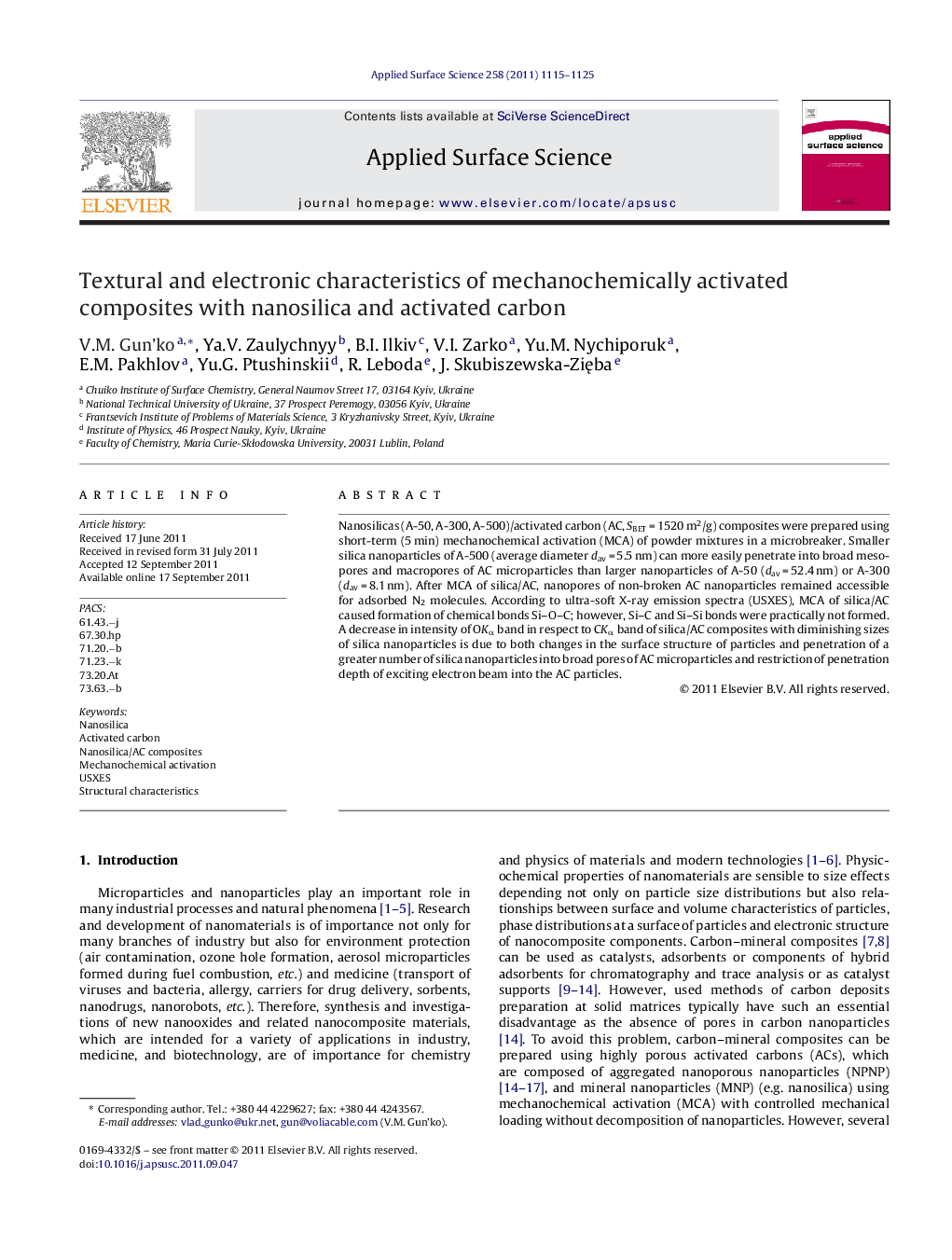| Article ID | Journal | Published Year | Pages | File Type |
|---|---|---|---|---|
| 5366993 | Applied Surface Science | 2011 | 11 Pages |
Nanosilicas (A-50, A-300, A-500)/activated carbon (AC, SBET = 1520 m2/g) composites were prepared using short-term (5 min) mechanochemical activation (MCA) of powder mixtures in a microbreaker. Smaller silica nanoparticles of A-500 (average diameter dav = 5.5 nm) can more easily penetrate into broad mesopores and macropores of AC microparticles than larger nanoparticles of A-50 (dav = 52.4 nm) or A-300 (dav = 8.1 nm). After MCA of silica/AC, nanopores of non-broken AC nanoparticles remained accessible for adsorbed N2 molecules. According to ultra-soft X-ray emission spectra (USXES), MCA of silica/AC caused formation of chemical bonds Si-O-C; however, Si-C and Si-Si bonds were practically not formed. A decrease in intensity of OKα band in respect to CKα band of silica/AC composites with diminishing sizes of silica nanoparticles is due to both changes in the surface structure of particles and penetration of a greater number of silica nanoparticles into broad pores of AC microparticles and restriction of penetration depth of exciting electron beam into the AC particles.
Graphical abstract. Silica nanoparticles can penetrate into broad pores of activated carbon microparticles.Download full-size imageHighlights⺠Characteristics of nanosilica and activated carbon composites depend on a silica type. ⺠USXE spectra show penetration of silica nanoparticles into broad pores of AC microparticles. ⺠3s-electrons of Si atoms are more sensitive to formation of composites than 2p-electrons of O and C.
